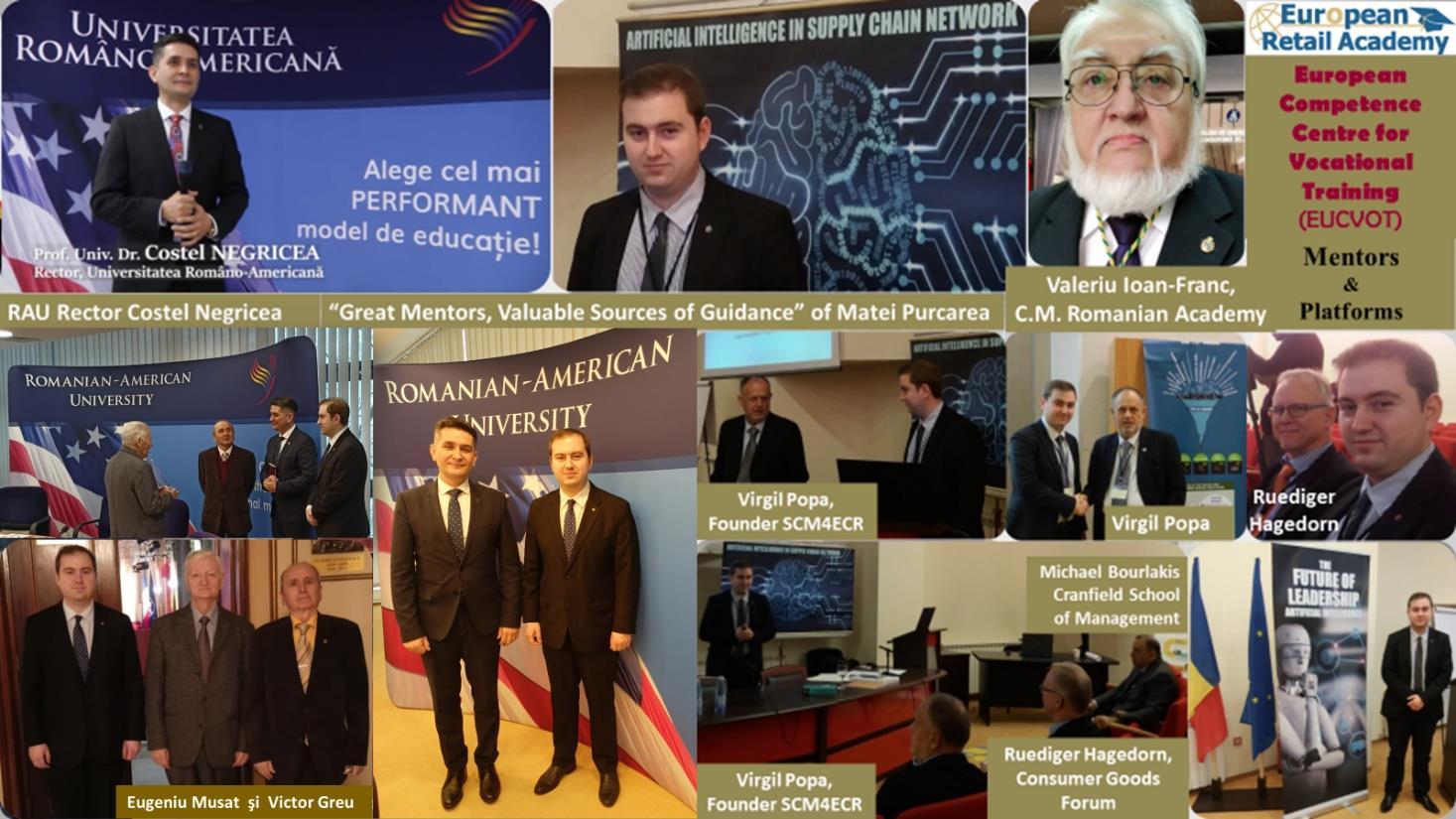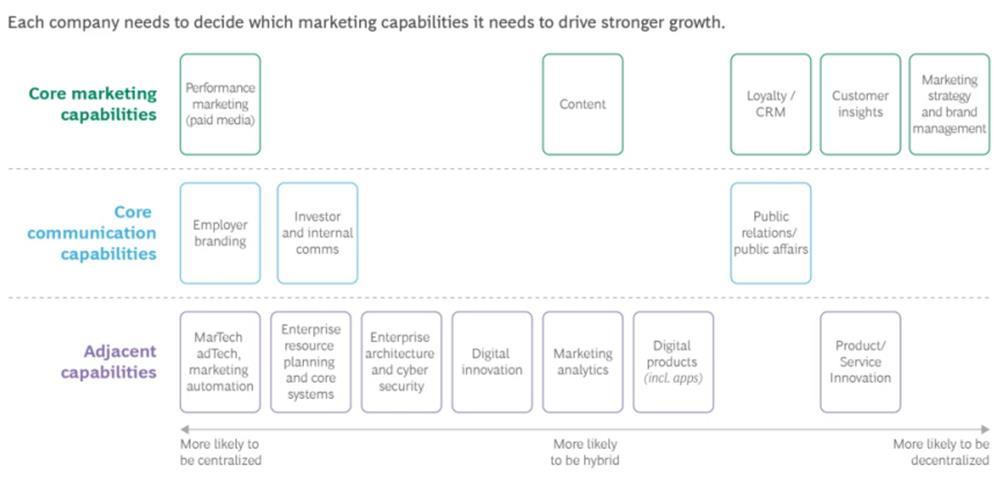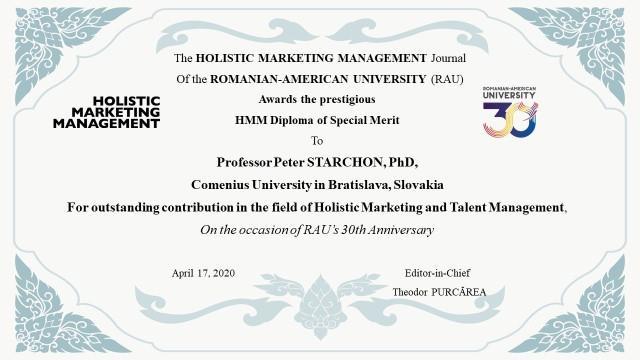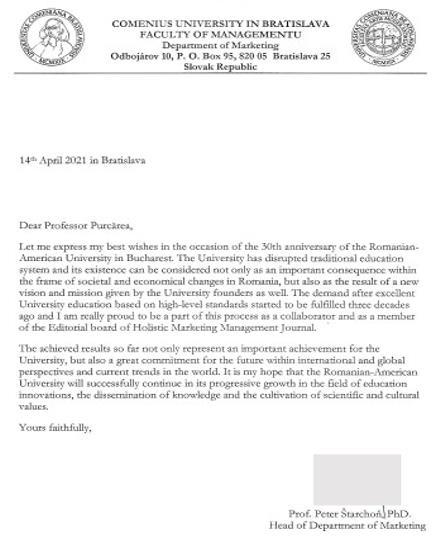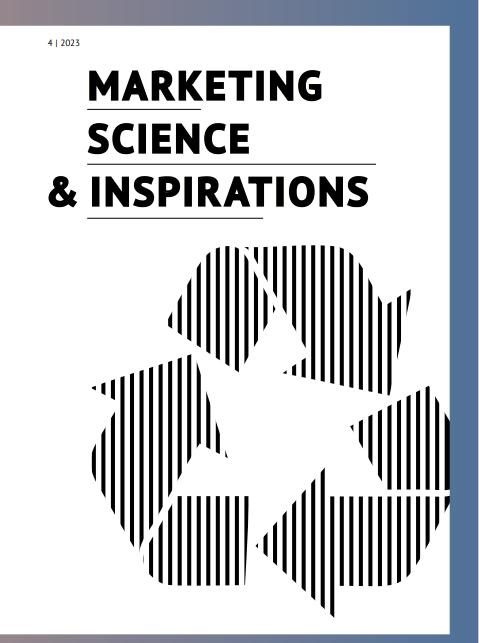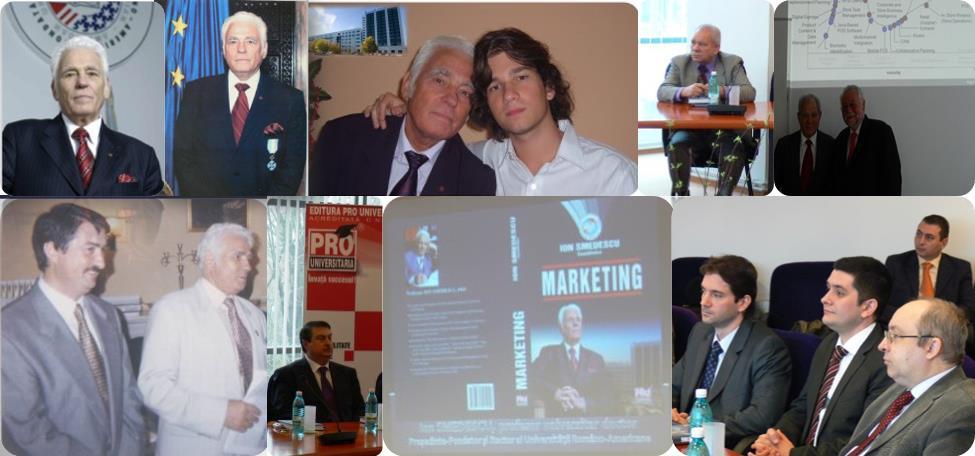
Editorial Board of “Holistic Marketing Management”
(A refereed journal published four times annually by the School of Management-Marketing of the Romanian-American University)
Editor-in-Chief
Theodor Valentin PURCĂREA
Bernd HALLIER
John SAEE
John L. STANTON
President of European Retail Academy; President of EuCVoT; Member of the Astana Economic Scientists Club; Former Managing Director EHI Retail Institute, Germany, Chairman of the Advisory Board of EuroShop, Chairman of the Board of the Orgainvent, Trustee of EHI Retail Institute at GLOBALG.A.P.
President - Association of Global Management Studies (USA); Editor-in-Chief, JournalofEntrepreneurshipandSustainabilityIssues &FormerEditor-in-Chief, Journal of Management Systems, USA; Australian Graduate School of Entrepreneurship, the Facultyof Business and Enterprise, Swinburne University of Technology; Member of France’s National Academy of Scientific Research (CNRS); Director - ESB International Teaching and Research Exchanges, Reutlingen University, Germany
Professor of Food Marketing, Erivan K. Haub School of Business, Saint Joseph’s University Philadelphia, USA; Director, Institute of Food Products Marketing, Editor, Journal of Food Products Marketing; Hall of Fame of the European Retail Academy, Honored Personality 2016
Léon F. WEGNEZ
William PERTTULA
Levent ALTINAY
Andrew KILNER
Dana ZADRAZILOVA
Secretary General, International Association of the Distributive Trade, AIDA Brussels; Member of France’s Academy of Commercial Sciences; Doctor Honoris Causa of NUPSPA (SNSPA) Bucharest; Hall of Fame of the European Retail Academy, Honored Personality 2015; Administrator Secretary General of the Diplomatic Club of Belgium
Internet Marketing Professor, College of Business, San Francisco State University, USA
Professor of Strategy and Entrepreneurship, Research Area Leader, Oxford School of Hospitality Management, Faculty of Business, Oxford Brookes University, UK
First MBA Director at the Rennes Graduate School of Business in France; Director of RAFME Research into Management Excellence; PhD (Cambridge), MBA (City, London)
Faculty of International Economic Relations, University of Economics, Prague, Czech Republic
Riccardo BELTRAMO University of Turin, Italy
Sinisa ZARIC University of Belgrade, Yugoslavia
Gabriela SABĂU Memorial University, Grenfell Campus, Corner Brook, Canada
Hélène NIKOLOPOULOU University of Lille 3, France
Vasa LÁSZLÓ Szent Istvan University, Hungary
Peter STARCHON Comenius University in Bratislava, Slovakia
John MURRAY Faculty of Business, Dublin Institute of Technology, Ireland
Kamil PÍCHA Faculty of Economics, University of South Bohemia in Ceske Budejovice
Irena JINDRICHOVSKA Deputy Head of Department of Business Economics, University of Economics and Management, Prague, Czech Republic
Norbert HAYDAM Faculty of Business, Marketing Department, Cape Peninsula University of Technology, South Africa
Hans ZWAGA Kemi-Tornio University of Applied Sciences, Finland
Roxana CODITA Technische Universität München, TUM School of Management
Valeriu IOAN-FRANC
Corresponding Member of the Romanian Academy, General Deputy Director, National Institute for Economic Research “Costin C. Kiriţescu”, Romanian Marketing Association; Romanian Distribution Committee
Dumitru MIRON Academy of Economic Studies in Bucharest, President of RAFPEC (FRAPEC)
Costel NEGRICEA Romanian-American University
Iacob CĂTOIU Academy of Economic Studies in Bucharest
Virgil BALAURE Academy of Economic Studies in Bucharest
Gheorghe ORZAN Academy of Economic Studies in Bucharest
Luigi DUMITRESCU Lucian Blaga University of Sibiu
Marius D. POP Babes-Bolyai University, Cluj-Napoca
Constantin ROŞCA President of Romanian Scientific Society of Management - SSMAR
Petru FILIP Dimitrie Cantemir University, Bucharest
Ion VOICU SUCALA
Technical University of Cluj-Napoca, Management and Economic Engineering Department; University of Glasgow, UK, College of Social Sciences, School of Social & Political Sciences; Managing Editor, Review of Management and Economic Engineering
Virgil POPA Valahia University of Târgovişte
Alexandru NEDELEA Ştefan cel Mare University of Suceava
Olguța Anca ORZAN Carol Davila University of Medicine and Pharmacy Bucharest
Ana-Maria PREDA Romanian-American University
Ovidiu FOLCUȚ Romanian-American University
Doinița CIOCÎRLAN Romanian-American University
Tudor EDU Romanian-American University
Alexandru IONESCU Romanian-American University
Andreea Elisabeta BUDACIA Romanian-American University
Marius Dan DALOTĂ Romanian-American University
Mihai PAPUC Romanian-American University
Gheorghe ILIESCU Romanian-American University
Oana PREDA Romanian-American University
Olga POTECEA Romanian-American University
Nicoleta DUMITRU Romanian-American University
Monica Paula RAȚIU Romanian-American University
Alexandra PERJU-MITRAN Romanian-American University
Associate Editors
Dr. Dan SMEDESCU
Dr. Irina PURCĂREA
Art Designer Directors
Alexandru BEJAN
Dr. Ioan Matei PURCĂREA
“Holistic Marketing Management”
(A refereed journal published four times annually by the School of Management-Marketing of the Romanian-American University) Volume 14, Issue 1, Year 2024

Contents
Theodor PURCĂREA - At the Confluence of Disruptive Technologies and Leadership by Collaboration and Correct Consensus, Combining ICT/AI with Human Intelligence/Values....................................................................4
Dominic Elena MAGNO - The Influence of Social Media on Contemporary Consumer and Tudor EDU Behavior: Part III, Research Findings and Discussion.....................9
Ioan Matei PURCĂREA - Challenges for Modern Marketing and E-Commerce Merchandising..................................................................................17
Dan SMEDESCU - ‘Marketing Science and Inspirations’: Green Marketing, Neuromarketing, and Consumer Behavior..............................................................................24
The responsibility for the contents of the scientific and the authenticity of the published materials and opinions expressed rests with the author.








In our last HMM issue we brought to our skilled readers’ attention valuable recommendations for marketers, such as to use multiple metrics in significant programs’ performance measurement when trying to keep in equilibrium several competing performance dimensions, and rebuild their organizations for AI, by discovering their best way to use AI, and doing a better customer-centric work based on a digital and AI-driven transformation strategy put into practice (Purcarea, 2023). According to McKinsey & Company (2023), a business transformation has as its high-level orchestrator a Chief Transformation Officer (CTO, who can be a Responder, a Revitalizer or a Reinventor, but not only these types) making decisions (about priorities, investments, talent, and operations) based on the mandate (and authority) received from the CEO. While in the opinion of Professor Victor Greu (2023): “… now, any improvement/ solution should include a more comprehensive/holistic approach, which inherently will consider in model/equation more complicate and changing “actors” / factors, but unfortunately more of them contain more uncertainty – a crucial feature of actuality and future… Analyzing and eventually mitigating (part of) uncertainty, including ICT advances help, where AI has an increasing role, it is also approached by Eric Heim (in ‘Knowing When You Don’t Know: Engineering AI Systems in an Uncertain World’, 2021), where the known problems of uncertainty are transferred at the level of AI/ML, but, for facing ML concrete limitations, a principle solution for the AI/ML model confidence improvement is to add reference data in order
to calibrate the uncertainty, as, in a deeper domain/approach (a deeper learning), we have to choose/identify those added reference data, among the alternate or closed probabilities of events (contingencies). Finally, finding the most probable scenarios/events, in every ICT/AI/ML application case or system, is not only a complex problem of modelling, but, since the human nature and human decisions are largely implied, we consider that harmonizing and synchronizing all relevant data/actions is paramount for the best results at Earth scale and we have to notice the importance of every little step on such long and winding road, which could be reached by timely analyses and combining ICT/AI with human intelligence/values” .
Recently, BCG experts (Seppä et al., 2024) highlighted the current companies’ always active transformation mode to continue reinvention, boards’ role within today’s difficult business environment (considering various factors such as cost pressure, high interest rates, geopolitical disruptions, new technology, evolving customer preferences etc.) being to undertake adequate measures to ensure companies’ needed competitive position by more frequently, actively, and detailed engagement with the management team (see figure below). On the other hand, let’s remember that according to McKinsey’s experts (Boudet, et al., 2023), resilient marketers’ role is seen as essential during uncertain times, by diagnosing, setting a goal, crafting a plan, and unifying the C-suite, acting decisively on that basis, a key to companies’ long-term growth being considered to invest in marketing. McKinsey’s research also demonstrated that in order to capture the incremental sales potential of marketing-led growth (Brodherson et al., 2023), marketing can be repositioned at the core of organizations’ growth engine, the conviction in modern marketing being built by CEOs and CMOs working jointly, and the impact of a better marketing measurement framework for growth being ensured by CEOs, CFOs and CMOs working together.

Source: Seppä, T., Klemmer, D.C., Ramachandran, R. and Abreu, J., 2024. Boards Can Make or Break a Transformation, Boston Consulting Group, February 20, 2024, p. 3 (Work cited)
Revisiting their globally embraced book “CEO Excellence” (Publisher: Scribner, March 15, 2022), Dewar, Keller and Malhotra (2024), remembered the six roles of a CEO (set the direction, align your organization on that direction, mobilize your leaders to deliver on that direction, work with your board, connect with a group of stakeholders, manage your personal effectiveness), widely comprehended by starting from seeing concrete patterns, identifying the role of a courageous and daring mindset in separating the best from the rest, leading with rigor and discipline by collaboration and consensus, considering dynamics, the needed help by the board to help their business, and stakeholders’ motivations, being accountable and adding good value in a volatile world, factoring differences in certain countries. It is significant that the above-mentioned tree authors were invited to be guest lecturers at the reputed Wharton, Stanford, Harvard, and INSEAD business schools.
It is interesting to note that in the same period of time we received an e-mail through LinkedIn from a LinkedIn ‘Top Voice’ & influencer Customer Experience & Marketing, Colin Shaw (2024), regarding a challenging article entitled “Overcoming Gridlock in decision making: Unraveling the Paradox of False Consensus”. He concluded his remarks by saying as follows: “The Abilene Paradox often happens because everyone is going along to get along . So, to avoid finding oneself on the road to Abilene at work, leadership needs to get comfortable with not knowing what to do at all times. Also, learning to create an environment where the team can discuss solutions together rather than mindlessly following the leader is crucial. Finally, leadership must draw out the input of all the team members, not just the loudest voices in the room”. And as John F. Kennedy said: “Leadership and learning are indispensable to each other”.
Coming back to BCG experts (MacDonald et al., 2024), it is worth mentioning the converging technology trends (Emotional intelligence – EQ-X / Emotional quotient – EQ; Agentto-Agent CX; Generative user interface – GenUI; XR+AI; Screenless CX) recently identified by them and which are ready to move so as to transform CX, consequently, in order to build their companies’ competitive advantage, leaders being recommended to consider some top priorities (think big, start building, embrace the unknown, be mindful, and follow the frictions).
Allow us to end by making reference to some reflections recently expressed by the global thought leader Hamilton Mann (2024), in the European Business Review, on the concept of artificial integrity (AI future benefitting of a critical framework proposed by this new introduced concept): “In this age of swift technological advancement, the philosophy of artificial integrity provides a guiding light, ensuring that our navigation through the AI-powered matrix of the world not only celebrates the synergy of human and machine but also protects the human ethos at the heart of true innovation. In introducing artificial integrity to the discourse, we set out to explore the potential transformation of tasks, jobs, and the collective workforce across industries
and, importantly, how the confluence of AI and human destiny can be guided with vision, accountability, and a deep-seated dedication to the values that are quintessentially human”.
So, let us think carefully ahead, considering the above-mentioned valuable ideas, continuing to develop critical thinking and making better judgements based on evidence and reasoning!
Theodor Valentin Purcărea Editor-in-ChiefReferences
Boudet, J., Brodherson, M., Robinson, K. and Stein, E., 2023. Beyond belt-tightening: How marketing can drive resiliency during uncertain times, McKinsey & Company, June 26, 2023, pp. 1-9. Available at: <https://www.mckinsey.com/capabilities/growth-marketing-and-sales/ourinsights/beyond-belt-tightening-how-marketing-can-drive-resiliency-during-uncertain-times?>
[Accessed 29 June 2023].
Brodherson, M., Ellinas, J., See, E. and Tas, R., 2023. The power of partnership: How the CEO–CMO relationship can drive outsize growth, McKinsey & Company, October 26, 2023, pp. 1-14. Available at: <https://www.mckinsey.com/capabilities/growth-marketing-and-sales/ourinsights/the-power-of-partnership-how-the-ceo-cmo-relationship-can-drive-outsize-growth>
[Accessed 31 October 2023].
Dewar, C., Keller, S. and Malhotra, V., 2024. The CEO’s secret to successful leadership: CEO Excellence revisited, McKinsey & Company, Interview conducted by Raju Narisetti, the leader of McKinsey Global Publishing, March 15, 2024, pp. 1-21. Available at: <https://www.mckinsey.com/capabilities/growth-marketing-and-sales/our-insights/the-power-ofpartnership-how-the-ceo-cmo-relationship-can-drive-outsize-growth> [Accessed 15 March 2024].
Greu, V., 2023. Using information and communication technology advances to leverage the search of the World new balance with less resources -Part 4-, Romanian Distribution Committee Magazine, vol. 14(4), pp. 14-26, December.
MacDonald, D., Gerrard, P., Astorino, C., Hess, J., Rushworth, A. and Peterson, M., 2024. Converging Forces: The Next Frontier in Experience Design, BCG X, February 2024, pp. 1-8. Available at: <https://www.bcg.com/publications/2024/next-frontier-in-customer-experiencedesign?> [Accessed 2 March 2024].
Mann, H., 2024. Introducing the Concept of Artificial Integrity: The Path for the Future of AI, European Business Review, January 26, 2024. Available at:
<https://www.europeanbusinessreview.com/introducing-the-concept-of-artificial-integrity-thepath-for-the-future-of-ai/> [Accessed 13 March 2024].
McKinsey & Company, 2023. What does a chief transformation officer do? McKinsey Explainers, December 4, 2023, pp. 1-8. Available at: < https://www.mckinsey.com/featuredinsights/mckinsey-explainers/what-does-a-chief-transformation-officer-do> [Accessed 10 March 2024].
Purcarea, T., 2023. Embracing AI-Driven Transformation as a Comprehensive Mindset, Better Serving Customers, Holistic Marketing Management, vol. 13(4), pp. 04-08, December.
Shaw, C., 2024. Overcoming Gridlock in decision making: Unraveling the Paradox of False Consensus, LinkedIn Newsletter, March 12, 2024, 2:17 PM. Available at:
<https://www.linkedin.com/comm/pulse/overcoming-gridlock-decision-making-unravelingparadox-colin-shaw-xrpne?> [Accessed 12 March 2024].
Seppä, T., Klemmer, D.C., Ramachandran, R. and Abreu, J., 2024. Boards Can Make or Break a Transformation, Boston Consulting Group, February 20, 2024, pp. 1-8. Available at: <https://mkt-bcg-com-public-pdfs.s3.amazonaws.com/prod/boards-can-make-or-breaktransformation.pdf> [Accessed 2 March 2024].



The influence of social media on contemporary consumer behavior: Part III, Research Findings and Discussion
Dominic Elena MAGNO and Tudor EDUAbstract
The significance of social media in today’s world cannot be understated. It has significantly altered how we connect, communicate, and obtain information. Regardless of distance, online communication has made it simpler for people to stay in touch with friends and family. Today's society is heavily reliant on social media, with billions of users regularly using sites like Facebook, Instagram, and Twitter. Customers are once again in the forefront in the business world thanks to the widespread usage of social media, which also provides marketers with a brand-new set of tools for connecting with customers and inventively integrating them into businesses. In essence, marketers need to be aware of the impact social media has had on customers' buying behavior. Understanding how social media affects consumer behavior can offer useful insights on consumer tastes, inclinations, and decision-making processes, which can guide marketing initiatives and promote company expansion. Businesses can more effectively communicate with customers, better focus their marketing campaigns, and keep on top of consumer trends by researching the effects of social media. Additionally, companies that comprehend how social media affects consumer behavior are at a competitive edge over rivals. Overall, social media has both positive and negative consequences on society, but it has unquestionably altered how we connect and communicate with one another, and it is sure to continue to develop and have potentially interesting implications on our daily lives. Recognizing that consumer behavior is a fairly comprehensive and broad topic, it would be difficult to gather, examine, and draw all relevant data and findings into single research; consequently, the research has concentrated on how decisions are made as it applies to social media marketing. The study’s goal is to identify the causes, timing, and ways in which social media’s influence on consumer decision-making. Additionally, possibly with this specific perspective, the research can help identify the chances and problems businesses are confronting with this impact on customers’ decision-making in order to capture and embrace the opportunities in the new marketing era. Our study used two research questions within this context: 1. How do consumers receive, interpret, and choose the information before making a decision? 2. How social media today affects on consumer behavior? This paper is divided into four chapters, as follows. Part I contains Introduction and Chapter II, the relevant literature review with regard to the consumer decision making process, social media, social media and consumer behavior, and figures about social media. Part II presents the research methodology (qualitative research; research variables connected to the discussion topics). Part III contains research findings and discussion, and Part IV presents the research conclusions.
Keywords: Social media; Consumer behavior; New marketing era
JEL Classification: D10; D80; L81; L82; M31
Chapter IV: RESEARCH FINDINGS AND DISCUSSION
This part presents the results of the 20 in-depth interviews that were performed in order to lay the groundwork for a discussion with the already-available secondary data.
The inductive study based on the researcher's original research is included in the section below that is primarily based on qualitative observations. In this section, 10 hypotheses are validated or rejected based on the original study.
4.1 Hypothesis 1
Question 1. How often do you use social media platforms?
Mostly frequent answers:
Everyday
The most common response from the respondents, every day, gave the researcher a clearer understanding of the important role that social media plays in our daily lives.
4.2 Hypothesis 2
Question 2. What social media platforms do you use the most?
Mostly frequent answers:
Facebook WhatsApp
Tik Tok
The top three social media platforms worldwide at the start of January 2023 are Facebook, Instagram, WhatsApp, and Tik Tok, as also mentioned in section VII of table 2. The majority of people worldwide do utilize these social networks, according to respondents.
4.3 Hypothesis 3
Question 3. How do you feel when you use social media?
Mostly frequent answers:
Connected with other people
Entertained, great
Based on findings, respondents feel “connected with other people” while using social media. This demonstrates to the person conducting the study how profoundly social media use has changed the ways in which individuals communicate, interact, and gather information. Consumers are once again at the center of the enterprise world because to the growing use of social media. Marketers may now communicate with clients and inventively integrate them into their businesses thanks to a new set of technologies at their disposal.
4.4 Hypothesis 4
Question 4. What kind of content do you engage with the most on social media?
Mostly frequent answers:
Video reviews
Fashion
Travel Based on findings, most of the respondents spend time on social media watching videos reviews about products. “The perceived information quality and persuasiveness of online product reviews, as well as the perceived amount of feedback, are discovered to have a significant positive impact on consumers' purchasing behavior”. These evaluations provide consumers with a resource for researching and comparing products and services as well as a tool to base decisions on the opinions and experiences of others. Reviews created by actual customers are generally more authentic and impartial than those produced by paid marketing.
4.5 Hypothesis 5
Question 5. Have you ever purchased a product or service based on an advertisement you saw on social media?
Mostly frequent answers:
Yes
According to the results, the majority of respondents who were asked if they had ever bought something after seeing an advertisement for it on social media said yes. This demonstrates how social media advertising can be a potent tool for businesses to utilize.
4.6 Hypothesis 6
Question 6. How do you feel about targeted advertising on social media?
Mostly frequent answers:
Based on findings, most of the respondents believe that targeted advertising is a useful tool on social media. Instead, the other part of the respondents answered saying that they perceive targeted advertising as an “aggressive” way of promoting on social media. If in finding conclusions in chapter 5.1 consumers feel comfortable revealing their information on social media websites, in this study a quarter of the respondents don’t feel comfortable with this way of advertising.
4.7 Hypothesis 7
Question 7. Do you feel like social media has changed the way you make purchase decisions?
Mostly frequent answer:
Yes
According to the results, the majority of respondents who were asked if social media had impacted the way they made judgments about purchases said yes. The researcher can comprehend that social media is having an impact on how consumers make decisions.
4.8 Hypothesis 8
Question 8. How do you feel about influencer marketing on social media?
Mostly frequent answers:
Useful
Based on the findings of the study, the respondents believe influencer marketing to be a beneficial social media strategy. Their responses confirm the main study’s hypothesis that social distance limits are the reason why customers choose to spend greater amounts of time engaging with social networking platforms and consuming more material from influencers. This is indicated in chapter 3.4.
4.9 Hypothesis 9
Question 9. Have you ever unfollowed or stopped following a brand on social media?
Mostly frequent answer:
Yes
Based on the results, the majority of the respondents indicated yes. To help readers understand the motivation behind this reaction, the researcher questioned respondents why they would
unfollow a brand on social media. Based on research, several insights and findings were obtained. A common reason for unfollowing or stopping following a brand on social media was the perception of excessive promotional content. Interviewees expressed a preference for brands that strike a balance between promotional messages and content that provides value, such as educational or entertaining posts. This suggests that brands need to adopt a more subtle and strategic approach to promotional content to retain their followers. Further many interviewees reported that they unfollowed or stopped following a brand on social media due to dissatisfaction with the content being posted, as feeling like the brand didn't resonate with their own way of being. It is obvious how each customer's own personality and beliefs influence whether or not they choose to follow a brand on social media. This information can help brands better understand consumer preferences, refine their social media strategies, and cultivate meaningful and lasting relationships with their followers.
4.10 Hypothesis 10
Question 10. How do you think social media affects your overall perception of brands and products?
Mostly frequent answers:
Buy more products based on reviews
Easily influenced by reviews/influencers
Social pressure
According to research, most respondents are making more purchases as a result of social media. Another group of respondents believes they are readily persuaded to purchase a product after reading a review or seeing an influencer advertise it. Not to mention, some of the responders had to deal with the social pressure brought on by the widespread usage of social media in modern society. “In today’s world, people buy things in order to appear “liked” .
The results of this qualitative research study are consistent with earlier studies in the subject, highlighting how social media has a significant impact on consumer behavior. For instance, according to research by D. Lakshmanan and Dr. S. Rabiyathul Basariya (2017) on the effectiveness of social media platform advertising, the caliber of the messages or contents, the company's involvement, and its connections to other marketing platforms all significantly affect how effective social media marketing is. Similarly, the qualitative study found that most respondents who were questioned about whether they had ever purchased something after seeing an advertisement for it on social media replied yes. This exemplifies how effective a tool social media advertising can be for businesses.
In addition, the qualitative study supports research by Mass Relevance, a business that provides clients with a social media curation platform, which found that 64% of the consumers
interviewed had already made purchases based on social media presence and reviews and that 59% of consumers are more likely to trust a brand that is active on social media. The majority of respondents in the qualitative survey routinely spend time on social media watching product review videos. These reviews give customers a resource for learning about and comparing goods and services, as well as a way to make decisions based on the experiences and opinions of others. Reviews written by genuine customers are typically more trustworthy and objective than reviews provided by paid marketing.
The findings, however, also go against several of the accepted theories. The qualitative study found that consumers believe they are easily persuaded to buy a product after reading a review or seeing an influencer advertise it, which is in contrast to the claims made by Loredana Di Pietro and Eleonora Pantano (2012) who argued that using social networks as a tool to support a purchasing decision is heavily influenced by enjoyment. Not to add, some of the respondents had to deal with the peer pressure that resulted from social media’ pervasive use in contemporary society. This difference highlights the need for additional research into the contextual elements that influence how purchasing decisions on social media affects consumer behavior.
In conclusion the research additionally found that social media has a big impact on customer attitudes and views. Participants stated that they have developed aspirational tastes and wants as a result of the carefully curated and frequently idealized depictions of lifestyles and goods on social media platforms. As a result, consumer expectations have changed, and people now look for goods and experiences that reflect the trends and principles presented on social media. This finding highlights the transformative power of social media in influencing consumer attitudes and shaping their perception of what is desirable and appealing.
The study also clarified how social media helps customers feel more connected to one another. Through social media platforms, participants showed a desire to interact with brands and other customers, resulting in the creation of online communities. This sense of belonging and the desire of recognition from society through online networks have a considerable impact on consumer behavior. It stresses the influence of social networking sites on decision-making processes and underscores the value of social approval and acknowledgment in influencing consumer choices.
References
1. Another perspective on Guest Bunce and Johnson’s (2006) landmark study.
2. Association for Psychological Science, 2008. Complex Decision? Don’t Think About It. ScienceDaily. (http://www.sciencedaily.com/releases/2008/12/081209154941.htm [Retrieved May 25 2013]).
3. Bakker D. (2018) Conceptualising influencer marketing. Journal of emerging trends in marketing and management 1(1) pp.79–87.
4. Barefoot D. & Szabo J. (2010). “Friends With Benefits: A Social Media Marketing Handbook” San Francisco: No Starch Press.
5. Bruner, J. S., Goodnow, Jacqueline J., and Austin, G. A. (1956). A Study of Thinking. New York: John Wiley & Sons publications in psychology; Association for Psychological Science, 2008.
6. Chintan H Rajani and Dr. Ashvin Solanki Motivations For Using Social Media: An Exploratory Study. International Journal of Management 7(4) 2016, pp.123–129.
7. D. Lakshmanan and Dr. S. Rabiyathul Basariya, “The Role of Social Media On Enhancing Advertising Effectiveness”, International Journal of Civil Engineering and Technology 8(9) 2017, pp. 1042–1047.
8. Di Pietro Loredana, Eleonora Pantano (18-29, July/September 2012). “An empirical investigation of social network influence on consumer purchasing decision: The case of Facebook” Journal of Direct Data and Digital Marketing Practice, 14, 18-29.
9. Drury G.N., 2008. “Social Media: Should marketers engage and how can it be done effectively”.
10. Edelman D.C. (2010) Branding in the digital age: You’re spending your money in all the wrong places, Harvard Business Review. [Online] Available: http://hbr.org/2010/12/branding-in-the-digital-age-youre-spending-yourmoney-in-all-the-wrong-places/ar/1 [15
11. Figure 1. Cox et al., 1983. The five-stage model, Planning, search, certainty and satisfaction among durables buyers: a.
12. Longitudinal study. Advances in Consumer Research X:394-399.
13. Figure 2. Steps between evaluation of alternatives and a purchase decision. Kotler P. & Keller K. L., 2009. Marketing management. Upper Saddle River, N.J: Pearson Prentice Hall.
14. Figure 3. Social media components. Dann S. & Dann. S., 2011. E-Marketing: Theory and Application. London U.K: Palgrave Macmillan.
15. Figure 5 Four types of buying behavior Clootrack 2020, https://www.clootrack.com/knowledge_base/types-ofconsumer-behavior.
16. Foley G., Timonen V. Using Grounded Theory Method to Capture and Analyze Health Care Experiences. Health Serv Res. 2015 Aug;50(4):1195-210. 17. Global Instagram influencer market size from 2017 to 2020. https: //www.statista.com/statistics/748630/global-instagram-influencer-market-value.
18. Hoyer W.D. & Macinnis D.J. (2008). “Consumer Behaviour”, 5th edition, Cengage Learning. 19. http://www.marketingweek.co.uk/sectors/sport/nike-takes-social-media-in-house/4005240.article.
20. https://www.clootrack.com/knowledge_base/types-of-consumer-behavior.
21. Hudson S. (2008). “Tourism and Hospitality Marketing: A Global Perspective”, SAGE Publications.
22. Jepsen A.L. (2007) ‘Factors affecting consumer use of the internet for information search’, Journal of Interactive Marketing, Vol. 21, No. 3, pp.21–34.
23. Joseph S. 2013. Nike Takes Social Media In-House.
24. Kacen. J. J. and Lee. J. A. (2002). “The influence of culture on consumer impulsive buying behaviour”, Journal of consumer psychology. 12(2) pp. 163-174.
25. Kotler P. & Keller K. L. (2015). Marketing management. Boston: Pearson. 26. Kotler P.; Wong V.; Saunder J.; Armstrong G., 2005. Principle of Marketing, 4th European edition. Pearson Education Inc.
27. Loudon D. L. & Della Bitta A. J. (1993). Consumer Behaviour: Concepts and Applications (4th ed.). New York: McGraw-Hill.
28. Maslow A. H. (1970). Motivation and Personality (2nd ed.). New York: Harper & Row.
29. Matter Communications 2020. Survey Methodology: Matter collected responses from 1000 U.S.-based consumers in May 2020 via a third-party provider to determine the findings of this survey.
30. Moser A Korstjens I. Series: Practical guidance to qualitative research. Part 1: Introduction. Eur J Gen Pract. 2017 Dec;23(1):271-273.
31. O’Reilly T. 2006. Web 2.0 Compact Definition: Trying Again. (http://radar.oreilly.com/2006/12/web-20compact-definition-tryi.html.
32. Ofir C. and Simonson I. (2005). “The Effect of Stating Expectations on Customer Satisfaction and Shopping Experience” Stanford Graduate School of Business 44p.
33. Punj G. (2012). ‘Consumer decision making on the web: a theoretical analysis and research guidelines’, Psychology and Marketing, Vol. 29, No. 10, pp.791–803.
34. Sadia Afzal Javed, Rabbani Khan (2015). Impact of online and conventional advertisement on consumer buying behaviour of branded garments. Asian Journal of Management Sciences & Education.
35. Silverman G., 2001. The Secrets of Word-of-Mouth Marketing. USA: AMACOM.
36. Smith Adam, 1776. An Inquiry into the Nature and Causes of the Wealth of Nations. London: Methuen & Co (Book IV chapter 8 49).
37. Soloman M.; Bamossy G. & Askegaard S., 2002. Consumer Behavior: A European Perspective. Upper Saddle River N.J: Pearson Prentice Hall.
38. Sternthal B. & Craig C. S., 1982. Consumer Behavior: An Information Processing Perspective. Englewood Cliffs N.J: Prentice Hall Inc.
39. Vinerean Simona, Iuliana Cetina, Luigi Dumitrescu, Mihai Tichindelean. “The Effects of Social Media Marketing on Online Consumer Behavior”, International Journal of Business and Management; Vol. 8 No. 14; 2013.
40. Weber L. 2009. Marketing to the Social Web: How digital customer communities build your business. Second Edition. N.J USA: John Wiley and Sons.
41. Weinberg T., 2009. The New Community Rules: Marketing on the Social Web. Sebastopol CA.
42. Zarrella D., 2010. The Social Media Marketing Book. Sebastopol CA: O’Reilly Media Inc. [Original source: https://studycrumb.com/alphabetizer].


